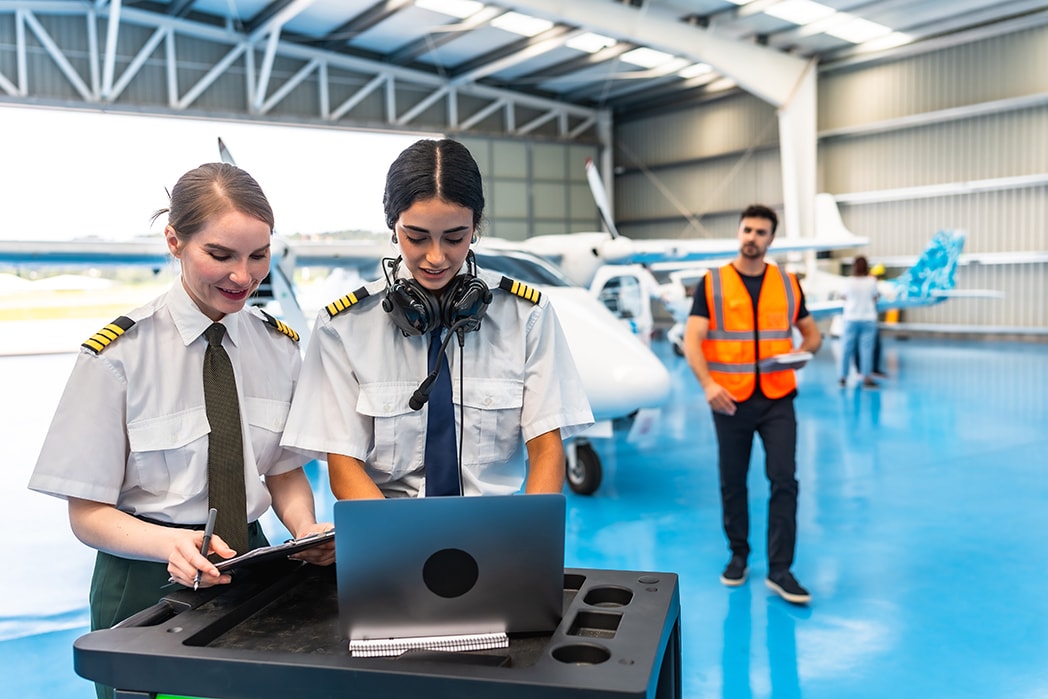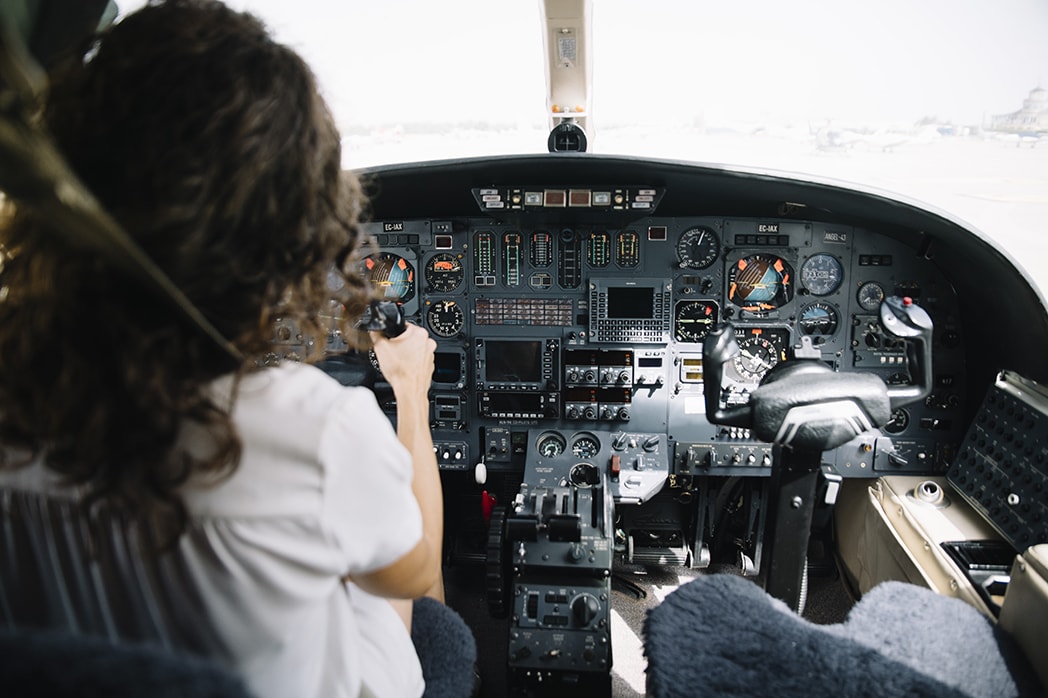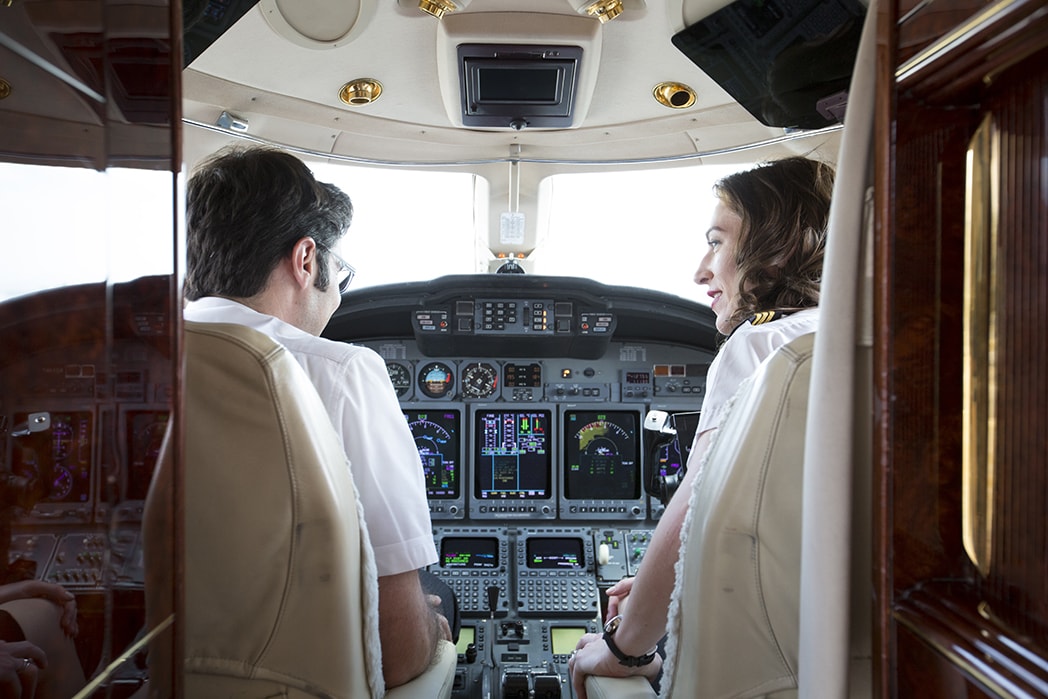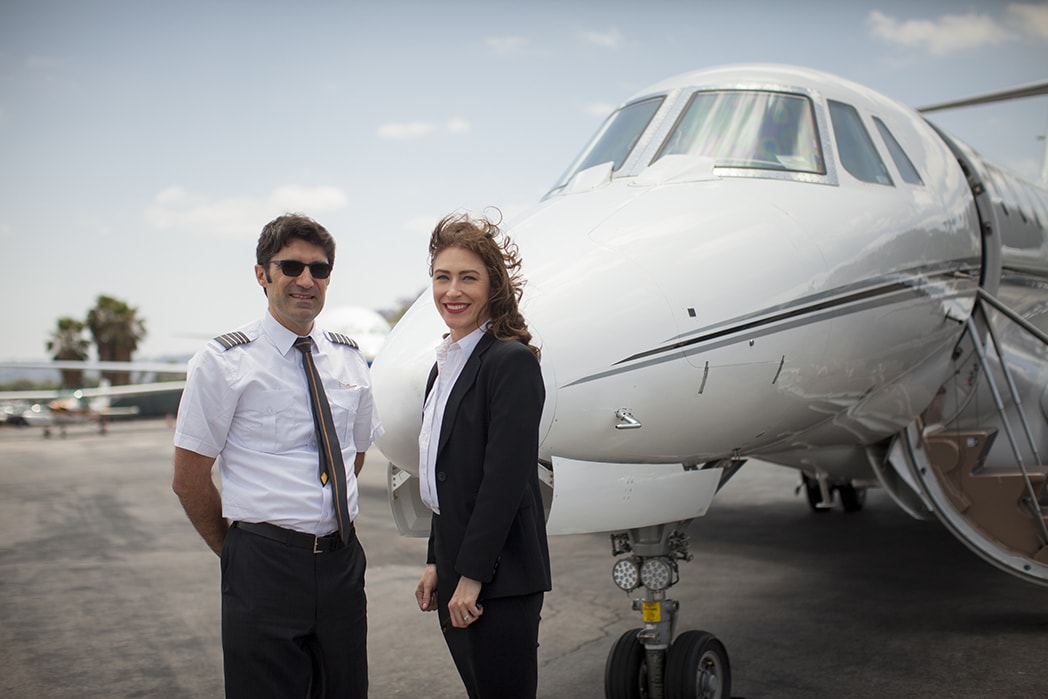Private Pilot Lessons: Costs, Benefits & What to Expect
Jul 15, 2025
Want to be a private pilot? Private pilot lessons are where you start. This covers everything from lesson structure and cost to training requirements and FAA exams. Buckle up and get ready to fly.
Key Takeaways
-
Private pilot lessons combine ground school theory with flying training, covering skills and real-world scenarios.
-
Choosing the right flight school and instructor is key, as it will impact your learning and success in getting your private pilot certificate.
-
Total cost for private pilot training is $21,000 to $26,000, so budgeting and planning is key.
Understanding Private Pilot Lessons
Private pilot lessons cover both theoretical knowledge and practical flying skills. Ground school is the foundation of this training and covers:
-
Aerodynamics
-
Navigation
-
Regulations This is the foundation of building confidence and competence to fly an aircraft safely.
The journey starts with a discovery flight, a thrilling experience that often turns curiosity into commitment.
This introductory flight gives you a glimpse into the world of aviation and a taste of what it’s like to be in the cockpit.
From there lessons progress to include preflight inspections, aircraft controls and safety procedures so you have a solid foundation before moving on to more advanced maneuvers.
Flight training combines these theoretical lessons with hands on experience, emphasizing the importance of understanding both technical and practical skills.
You’ll fly real world scenarios, applying your knowledge and building the proficiency to get your private pilot certificate.
Choosing the Right Flight School
Selecting the right flight school is a critical step in your flight training journey. Here are some important considerations:
-
Research local flight schools and assess their reputation for quality training and customer service.
-
Visit the school in person to gain insights into their programs, facilities, and instructor credentials.
-
Take an introductory flight if possible, to get a firsthand experience of what to expect.
Flight schools operate under different regulations, specifically Part 61 and Part 141.
Part 61 schools offer more flexibility in terms of scheduling and curriculum, while Part 141 schools provide a more structured environment with a set syllabus and courses.
Understanding these differences can help you choose the school that best fits your learning style and schedule.
Finding a compatible instructor is one of the most important aspects of choosing a flight school. A good instructor should be patient, knowledgeable, and able to adapt their teaching style to your learning needs.
Don’t hesitate to interview multiple instructors to find the right match, as this relationship will play a significant role in your training success.
Ground School: The Foundation of Flight Training
Ground school is part of private pilot training and provides the theoretical foundation for safe flying. Early lessons focus on the basics like preflight inspections, aircraft controls and safety procedures.
So you have a solid understanding of the fundamentals before we get into the deeper stuff.
Ground school covers a lot of subjects like aerodynamics, navigation and aviation regulations.
This theoretical knowledge is not only required to pass the FAA knowledge test but also to make informed decisions in the cockpit.
Using practice exams and interactive tools will help you understand and retain these concepts better.
Online Ground School Options
Online ground school offers:
-
Flexibility and convenience, learn at your own pace
-
Tons of resources, interactive lessons and video tutorials to help you learn
-
Free FAA manuals like the Airplane Flying Handbook, a must have for beginners, covers all the procedures and maneuvers for pilot certification
Overall online ground school makes the training process more comprehensive and efficient, get you ready to pass your pilot certification.
The convenience and variety of learning tools makes it a great option for many aspiring pilots.
Preparing for the FAA Knowledge Test
Preparing for the FAA knowledge test is a big part of your flight training. Creating a study schedule with regular review periods will help you retain and understand the material. Using FAA approved study materials is a must, as they match the topics and format of the actual exam.
Study guides for the FAA knowledge test outlines the topics and frequently asked questions. The FAA has a Private Pilot Test Prep app that has current FAA questions for knowledge tests, starting at $49. This app is a great way to practice and review the material.
Simulating the test environment with practice exams helps with time management and builds confidence for the actual FAA knowledge test. By familiarizing yourself with the test format and timing you’ll be ready to pass with flying colors.
Flight Time Requirements
To qualify for a private pilot certificate in the U.S., the following flight time requirements apply:
-
A minimum of 40 hours of flight time is required.
-
The average time to complete flight training is around 60 hours, as many students need additional practice to reach the necessary proficiency.
-
This flight time includes both instruction from an authorized instructor and solo flight training.
Of the 40 hours of flight time, at least half of the 20 hours must involve instruction from an authorized instructor. Additionally, candidates must complete at least 10 hours of solo flight training as part of their preparation. These solo hours are crucial for building confidence and demonstrating your ability to operate the aircraft independently.
Flight time requirements also include specific tasks:
-
At least 3 hours dedicated to cross-country flying
-
3 hours of night flight training
-
A minimum of 3 hours under instrument flight conditions to ensure pilots can handle various weather scenarios
These requirements ensure that you are well-rounded and capable of managing different flight situations, making sense of various challenges.
Costs of Private Pilot Lessons
The total cost for a private pilot certificate is $21,000 to $26,000. This includes flight instructor fees which are charged per hour for both in flight and ground instruction. Checkride costs for practical exams can vary widely and are $900 to $1,500.
Additional supplies needed for training are headsets, charts and pilot bags. Headsets alone are $400 to $1,000. Flight time is billed by Hobbs time which is engine operation time and varies by aircraft type. These costs add up but are worth it.
Online ground school is more cost effective than traditional ground school as you don’t have to pay for physical facilities. By planning and budgeting for these costs you can buy your ticket to become a private pilot without breaking the bank.
Interactive Tools and Resources
Interactive tools and resources are key to the learning experience for student pilots. Many online ground schools offer interactive learning tools like quizzes and videos to help you understand and retain complex aviation concepts. These personalized learning experiences are tailored to your needs and learning style.
Flight simulator offers:
-
A risk free environment to practice, where you can make mistakes and learn without real world consequences, that’s a big advantage.
-
A safe space to practice emergency procedures.
-
A place to develop problem solving skills.
Being part of an aviation community, like the FAA WINGS program, can also give you additional support and advice and a way to get encouragement.
Working with Your Instructor
A good instructor-student relationship is key to successful flight training. Consider:
-
How will your progress be monitored, including how often the supervisory staff will check on you.
-
A written curriculum to provide a structured learning experience.
-
The curriculum should outline topics to study and lesson details.
Consistency is key so try to fly at least twice a week to keep the momentum and not to delay getting your pilot certificate. Choose an instructor whose teaching style fits your learning style for a productive learning environment.
Practical Aspects of Flight Training
Practical flight training is structured to introduce new concepts gradually and allow you to build up your skills before solo flying.
As you progress through the lessons you will do more complex maneuvers including takeoffs, landings and emergency procedures. This hands on experience is essential to learn to fly as a competent pilot as it’s taught by doing.
Effective flight training combines simulation and real flying to provide a full education. This mix of training methods will make you well prepared for all flying conditions and scenarios.
Simulated Flights and Real-World Scenarios
Flight simulators whether at school or home provide a realistic practice environment for all pilots. Modern flight simulators can simulate real world weather conditions so pilots can prepare for adverse flying situations. That’s invaluable for building confidence and competence.
Simulated flights allow students to practice complex maneuvers and emergency procedures in a controlled environment, reducing the risk of real world flying. Simulation and actual flight time is key to comprehensive training.
Night Flying and Cross-Country Requirements
Night flying and cross-country are part of a private pilots training curriculum. Cross-country flight training requires pilots to demonstrate navigation and fly beyond a certain distance from the departure airport. That’s essential for planning and executing longer flights.
Master night flying and cross-country navigation and pilots will be prepared for any flight condition and scenario. That’s key to pilot safety and efficiency.
Tips for Successful Completion
To complete your flight training successfully, having a written curriculum and committing to regular lessons will help you learn so much more. Train consistently, ideally 2 times a week, and you’ll save money overall and stay on track. Start learning as soon as you can.
Final lessons include solo flight experience where students show they can fly the aircraft on their own. Solo is a big milestone in your journey to becoming a private pilot and getting your pilot’s license as you progress through the course.
It also marks the beginning of exploring the many pilot job benefits that come with earning your wings, from flexible career paths to travel opportunities.
Post-Training Steps
After you get your private pilot certificate, join aviation communities and programs like FAA WINGS to enhance your learning and safety as a pilot. Find a mentor in aviation to guide and support you through your training.
Search and rescue operations are a great way for private pilots to give back to their community and get some real flying time.
You can also begin exploring private pilot job opportunities that align with your interests, whether it’s teaching others, aerial photography, or participating in volunteer missions. Using your plane for personal travel allows you to enjoy flying for flying’s sake, not just for professional reasons.
Summary
Becoming a private pilot is a mix of book learning and flying time. From choosing the right flight school to passing the FAA knowledge test, every step is important to flying safely and with confidence.
Get on the journey, stay consistent and engage with the aviation community. Your dream of flying is within reach and the rewards of being a private pilot are unbeatable.
Frequently Asked Questions
How much does it cost to obtain a private pilot certificate?
Expect to spend between $21,000 and $26,000 to obtain your private pilot certificate, covering instructor fees and necessary supplies. It’s a worthwhile investment for your flying dreams!
What are the flight time requirements for a private pilot certificate?
To get your private pilot certificate, you need at least 40 hours of flight time, which includes both instruction and solo flying. So, grab those wings and start logging your hours!
What is the difference between Part 61 and Part 141 flight schools?
Part 61 schools give you more flexibility in your training, you can customize your lessons. Part 141 schools follow a structured syllabus for a more standardized approach. Choose based on whether you like a custom pace or a set curriculum!
How can I prepare for the FAA knowledge test?
Set up a study schedule, use FAA approved materials and practice with the FAA Test Prep app. You’ll be confident and ready!
What are the benefits of using flight simulators in training?
Absolutely, flight simulators are a safe space to practice and emergency scenarios without any real world risk. It’s a game changer for hands on training!




